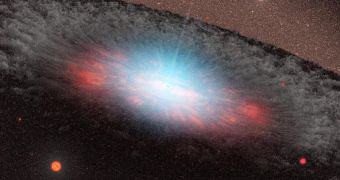A black hole is an object with a gravitational field so powerful that a region of space becomes cut off from the rest of the universe - no matter if radiation (including light) that has entered the region can ever escape.
Since a black hole is defined as an object from which light cannot escape, nothing else can escape because nothing can exceed the speed of light. Even if one could exceed the speed of light, escape from within a black hole would still be impossible due to the fact that black holes warp themselves around themselves, leaving no way to escape.
So far, no one has been able to tell exactly how fast are these black holes spinning, although recently, a team of astronomers developed a method that has successfully been applied for weighing a black hole named Cygnus X-1.
Now, researchers from the University of Maryland have determined how fast a supermassive black hole is spinning. The speed is indeed impressive, being very near the limits predicted by relativity. Using ESA's XMM-Newton X-Ray telescope, the team of scientists examined the quantity of iron in an accretion disk around a supermassive black hole at the center of galaxy MCG-06-30-15,
They found that the light emanating from the accretion disk is warped relativistically because the disk is spinning so fast. Their calculations showed that the black hole must be spinning at least 98.7% of the maximum spin rate allowable by Einstein's Theory of General Relativity.
This work is very important for astronomers, helping them understand how black holes grow over time. If these supermassive black holes form by slowly sucking in the surrounding matter, they should spin ever faster, up to this relativistic limit. Instead, if they form by colliding smaller black holes, they should be spinning much more slowly.

 14 DAY TRIAL //
14 DAY TRIAL //